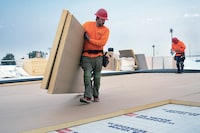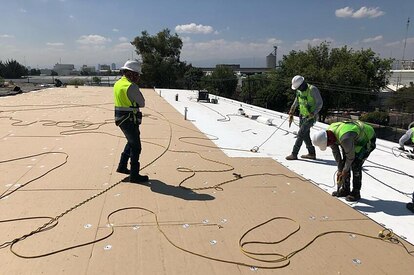
Science du bâtiment

-

Wind Design for Roofing Systems: Tips and Tools for Success
17 janvier 2025
-

-

Featured Blogs
-
 Science du bâtiment
Science du bâtimentGAF et la communauté de conception : Entretoiser l'écart avec la coopérative de conception
GAF continue d'améliorer ses services pour répondre aux besoins des clients. Cela inclut réfléchir de plus en plus aux défis auxquels les concepteurs font face et comment l'entreprise peut offrir des solutions. Par conséquent, la communauté de conception peut se tourner vers GAF pour un soutien complet dès le début de leurs projets commerciaux.
14 février 2023
-
 Science du bâtiment
Science du bâtimentComment la norme ASCE 7-16 affectera-t-elle l'industrie des toitures à faible pente? Histoire de deux bâtiments
On demande souvent, dans l'industrie des toitures, si la version 2016 de la norme ASCE 7 augmentera la pression éolienne exercée sur le bâtiment. La réponse est oui dans de nombreux cas. La question suivante est donc : dans quelle mesure? Cela nous amène à la question suivante : à quel point la capacité des systèmes de toiture devra-t-elle être accrue afin qu'une conception tenant compte de la résistance au vent respecte la norme ASCE 7-16?
15 février 2021
-
 Science du bâtiment
Science du bâtimentLa physique de l'inertie thermique dans la conception des toits à faible pente
What are the key material properties? In a previous article the use of thermal inertia to slow down heat flux through a roof assembly was discussed. Dans les bâtiments où les coûts de la climatisation dominent et où le chauffage est relativement peu utilisé, les toitures à forte inertie thermique peuvent améliorer l'efficacité énergétique. C'est particulièrement le cas des bâtiments, comme les bureaux, qui sont occupés seulement durant la journée. L'inertie thermique peut retarder la transmission de la chaleur dans un bâtiment vers la fin de la journée, augmentant ainsi le confort thermique et permettant aux gestionnaires de réduire le refroidissement pendant la journée.
13 janvier 2021
-
 Science du bâtiment
Science du bâtimentConception avec polyiso
L'isolation thermique est une partie importante des assemblages de toitures commerciales. Comme pour toute chose, il existe plusieurs façons de concevoir et d'installer l'isolation polyiso : une meilleure façon, la meilleure façon, et de nombreuses variantes entre les deux! Ce qui peut être le mieux pour réduire les coûts initiaux peut s'avérer seulement bon ou très mauvais sur la durée de vie à long terme du bâtiment.
23 décembre 2020